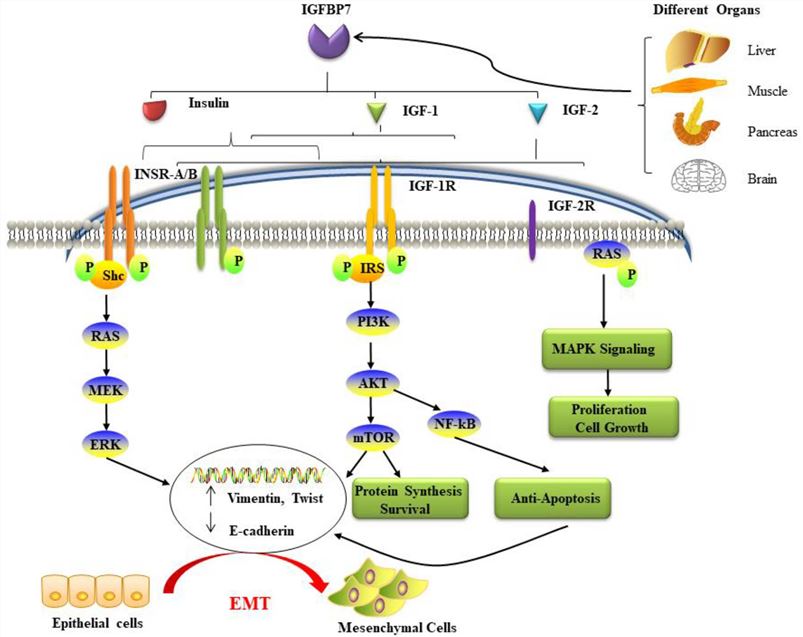Creative Biolabs is a well-recognized expert in the field of antibody generation and production. Especially, we have launched a series of in vitro diagnostic (IVD) antibody development services for different infections and diseases. Scientific progress has resulted in the discovery of novel disease biomarkers to fulfill the need for a quicker, more specific and more accurate diagnosis. Particularly, we provide IVD antibody development services against the TIMP metallopeptidase inhibitor 2 (TIMP-2) marker.
Introduction of TIMP-2
TIMP-2, also referred to DDC8 or CSC-21K, is a 24.4 kDa protein of 220 amino acids length. In humans, this gene is located on the chromosome 17q25.3 and belongs to the TIMP gene family. The encoded products by TIMP-2 are natural inhibitors of the matrix metalloproteinase, a type of peptidase implicated in the degradation of extracellular matrixes.
Except for the inhibitory role, TIMP-2 has a unique role among TIMP families that can directly suppress the proliferation of endotheliocyte in response to angiogenic factors. Also, it has the capability to inhibit protease activity of tissues upon remodeling of the extracellular matrix. In result, TIMP-2 may be crucial to the maintenance of tissue homeostasis. In addition, TIMP-2 in the tubular cells has been reported as a marker of cell-cycle arrest, involved in G1 arrest during the early period of cell injury. It is able to block the influence of the cyclin-dependent protein-kinase complexes on cell-cycle promotion, resulting in G1 phase for short time to prevent damaged cells from dividing.
 Fig.1 Exploring mechanisms and pathways linked to IGFBP7 and cancer.1
Fig.1 Exploring mechanisms and pathways linked to IGFBP7 and cancer.1
TIMP-2 Marker of Sepsis
Severe sepsis is a major cause of mortality in intensive care units (ICU) around the world. As the incidence of sepsis rises, the mortality has increased to 80% with the complication of four organ failures. The use of biomarkers has a large percentage to improve early diagnosis and therapy in critical patients and may affect the morbidity and mortality of these ill patients. And accumulating evidence shows that metalloproteinases and their inhibitors might represent a group of promising biomarkers for the prognosis of severe sepsis.
Acute kidney injury (AKI), one of the most common complications of sepsis patients, has a great prevalence in the ICU population and hospital mortality. The prognosis for sepsis with AKI remains poor. Currently, several biomarkers for AKI may allow for earlier initiation of renal protections and avoidance of iatrogenic harm. The performance of new biomarkers for AKI can presumably suffer in sepsis patients because numerous pathologic processes of sepsis can affect markers even without injuring the kidney. The mechanisms of organ injury in sepsis could not be specific for kidneys, and nonrenal organ failures may imitate AKI.
TIMP-2 Marker of Acute Kidney Injury (AKI)
Acute Kidney Injury (AKI) is an abrupt loss of kidney functions which is a complex clinical syndrome associated with adverse clinical outcomes. It can influence various biological mechanisms involving immunity, inflammation, apoptosis, and cell cycle. And it is difficult to predict and identify AKI in the early period, which increases difficulties to develop preventive and therapeutic measures for AKI.
Recently, TIMP-2 is a promising indicator of prediction of early AKI. It is reported that TIMP-2 is a key inducer of G1 cell cycle arrest which is involved in the progress of early phase of AKI. The G1 cell cycle arrest is a protective mechanism in organisms. It occurs when individual cells are exposed to stress, injury, and damages. It can suppress damaged cells continue to divide until the DNA damage is repaired. It has shown that the renal tubular cells will enter for a short period of G1 cell-cycle arrest when the cells suffer from injury and damages. And the renal tubular cells continue to divide until the damage has been repaired. These suggest that G1 cell-cycle arrest may be regarded as a marker of the pathogenesis of early AKI. So act as a key inducer of G1 cell cycle arrest, TIMP-2 can be considered as a potential marker of the pathogenesis of early AKI. Moreover, US Food and Drug Administration (FDA) has been approved TIMP-2 levels as a predictive biomarker in early AKI. This will help to early detection and risk assessment for early AKI patient and improve patient outcome by means of early intervention and optimization of patient management.
IVD Antibody Development Services for TIMP-2 Marker
Antibodies are core elements for antibody-based immunoassays for detecting and quantifying antigens of interest in different samples such as the serum, urine, tissue preparations, and so on. At Creative Biolabs, we offer a full range of antibody development, antigen & antibody conjugation, and IVD kit development services to clients across the globe. We develop antibodies that can be applied for different immunoassay formats, including ELISAs, lateral flow immunochromatographic assays, western blot, and flow cytometry.
Creative Biolabs has extensive experience and mature technology platforms in generating and developing IVD antibodies. If you are interested in discovering novel IVD antibodies, please do not hesitate to contact us for more details.
Reference
- Jin, Li, et al. "Insulin growth factor binding protein 7 (IGFBP7)-related cancer and IGFBP3 and IGFBP7 crosstalk." Frontiers in Oncology 10 (2020): 727. Distributed under Open Access license CC BY 4.0, without modification.
For Research Use Only.

